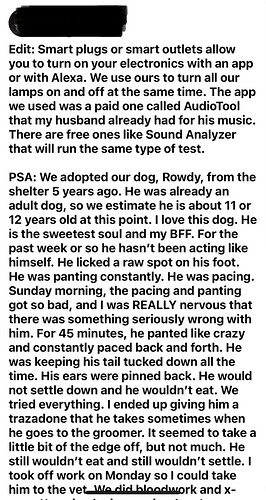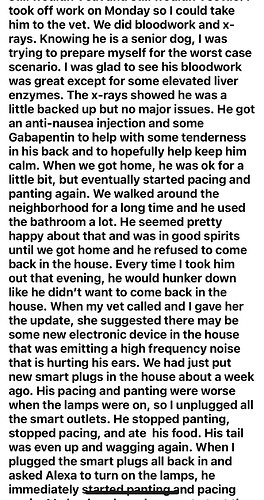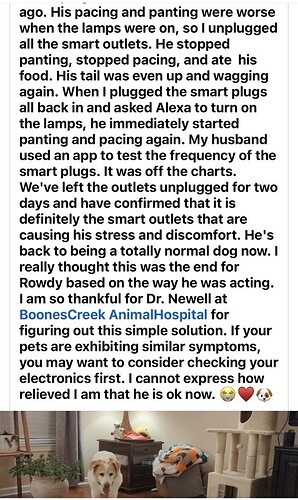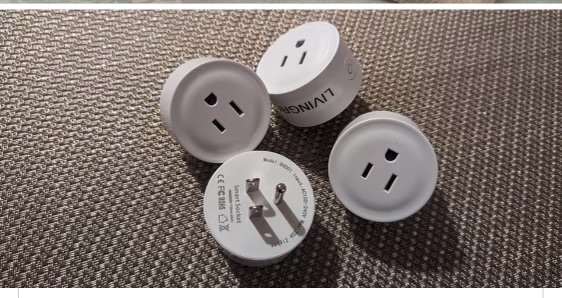Dogs, cats, and rodents have a range of hearing that enable them to hear sounds far to high in audio frequency for the human ear to hear. A child might be able to hear sounds up to 22 kHz. As we age, most adults lose the upper frequency range of hearing. I have difficulty with anything above 10kHz. Fortunately, speech and most of the sounds to which we are exposed daily are well below that frequency. Although the lower limit of human hearing is around 20 Hz, once the frequency drops below 50 Hz, we might feel the frequency more than hearing it.
Depending upon your location, most electrical systems operate at 50-60 Hz alternating current. Sometimes this electromagnetic variation can set up an audible variation perceived as a hum. In fluorescent, LED, and LCD lighting systems, the electrical signal can sometimes produce a visible flicker to which some individuals and some animals can be sensitive.
Smart Home devices operate on radio frequencies which are electromagnetic signals rather than audio signals. Although radio frequencies can go down as low as 3 Hz in the ELF (extremely low frequency) band, at such low frequencies, data transmission is extremely slow. To transmit data fast enough to be useful for smart home control, the devices operate in the UHF (ultra high frequency) range of 300- 3000 mega Hertz range or the SHF (super high frequency ) range of 3000 - 30,000 mHz. The later range is generally expressed as 3 gHz to 30 gHz.
Lutron Clear Connect operates at 434 mHz which is in the lower end of the UHF range. Z-wave device frequency varies by country but falls in the middle of the UHF range at 850 - 950 mHz. In the USA, the frequency is 908.42 mHz. Although the Zigbee protocol does provide for use of 868 mHz and 902-928 mHz. However, most home automation Zigbee devices operate in the same 2.4 gHz frequency range also used by WiFi and Bluetooth devices.
It is possible for electromagnetic radiation to impact humans and pets. However, the impact depends upon the frequency of the radiation, the proximity to the transmitter of that radiation, the power output of the radiation transmitter, and the duration of exposure over time. Since home automation devices are often battery powered, they are designed for low power consumption and limited duration of transmission, which reduces exposure time. I would not suggest placing the Hubitat hub on top of your head, but it is designed to operate using 5 volts at 1 amps while that is a total of 5 watts, that includes power consumed by the CPU chip and memory. The transmission power will be much lower. A microwave oven in your kitchen typically operates at 2.48 gHz, but it has a power output of 1000-1200 watts, more than 200 times the radiation from your Hubitat, but the microwave cavity is designed to minimize leakage of radiation. A powerful commercial radio station might output 100,000 watts of effective radiated power and the most powerful television stations might output 1 million watts effective radiated power. Thus, if you live close to a radio or television transmitter, you will be exposed to far more radiation from that source than anything in your home.







